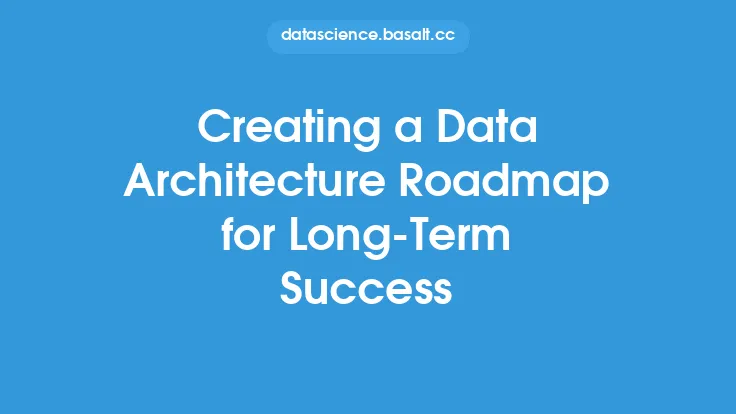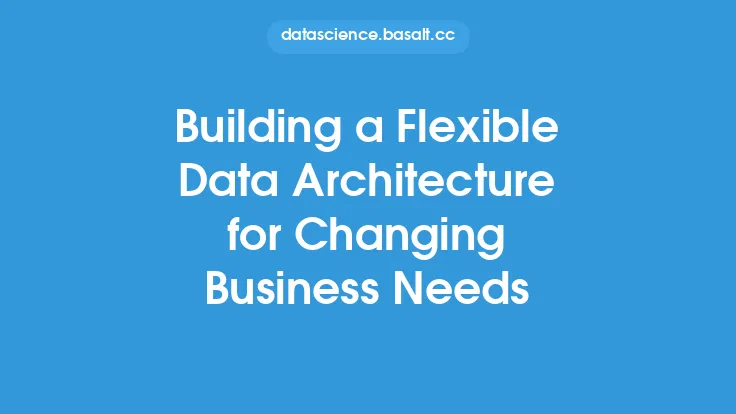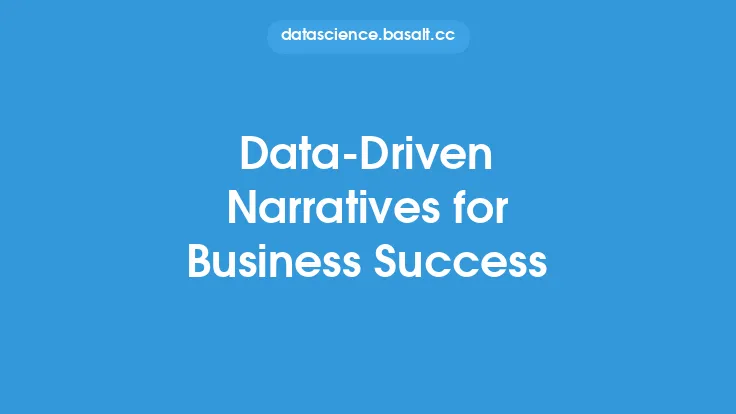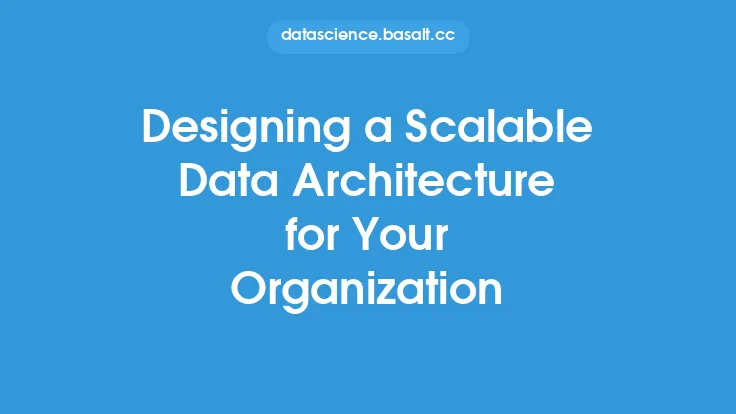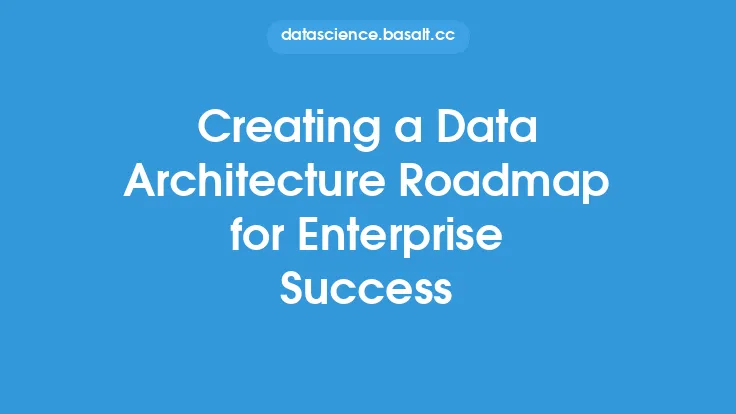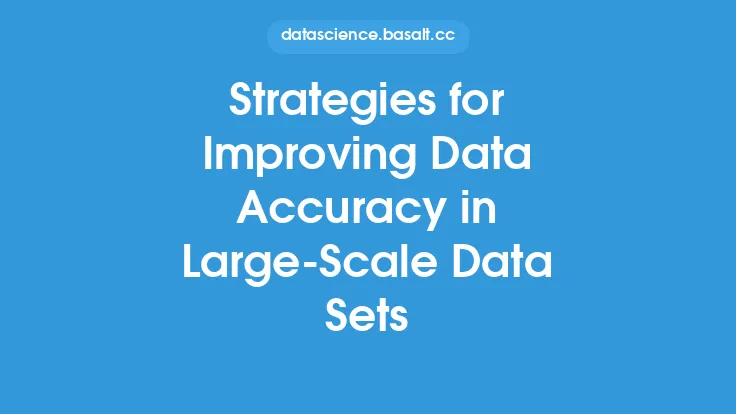In today's data-driven world, organizations are generating and collecting vast amounts of data from various sources. This data is used to inform business decisions, improve operations, and drive innovation. However, with the increasing complexity of data ecosystems, it's becoming challenging for organizations to maintain data quality, integrity, and transparency. This is where data lineage comes into play. Data lineage is the process of tracking the origin, movement, and transformation of data throughout its lifecycle. It provides a clear understanding of how data is created, processed, and used, enabling organizations to make informed decisions and ensure data quality.
What is Data Lineage Strategy?
A data lineage strategy is a comprehensive plan that outlines how an organization will track, manage, and maintain data lineage across its entire data ecosystem. It involves identifying the key data sources, understanding the data flow, and documenting the transformations and processing that occur throughout the data lifecycle. A well-planned data lineage strategy is essential for ensuring data quality, integrity, and transparency, and for enabling organizations to make data-driven decisions.
Key Components of a Data Lineage Strategy
A robust data lineage strategy consists of several key components, including:
- Data Source Identification: Identifying all the data sources within the organization, including internal and external sources, such as databases, files, and applications.
- Data Flow Mapping: Creating a visual representation of how data flows through the organization, including the various systems, processes, and transformations that occur.
- Data Transformation Documentation: Documenting all the transformations and processing that occur to the data, including data cleansing, data aggregation, and data formatting.
- Data Quality Metrics: Establishing metrics to measure data quality, such as data accuracy, completeness, and consistency.
- Data Governance: Establishing policies and procedures for managing data access, data security, and data compliance.
- Metadata Management: Managing metadata, such as data definitions, data formats, and data relationships, to provide context and meaning to the data.
Benefits of a Strong Data Lineage Strategy
A strong data lineage strategy provides numerous benefits to organizations, including:
- Improved Data Quality: By tracking data origin, movement, and transformation, organizations can identify and address data quality issues, ensuring that data is accurate, complete, and consistent.
- Increased Transparency: Data lineage provides a clear understanding of how data is created, processed, and used, enabling organizations to make informed decisions and ensure data transparency.
- Enhanced Data Governance: A data lineage strategy helps organizations establish policies and procedures for managing data access, data security, and data compliance, ensuring that data is handled and used responsibly.
- Better Decision Making: By providing a clear understanding of data origin, movement, and transformation, data lineage enables organizations to make data-driven decisions, reducing the risk of errors and improving business outcomes.
- Regulatory Compliance: A strong data lineage strategy helps organizations comply with regulatory requirements, such as GDPR, HIPAA, and CCPA, by providing a clear understanding of data processing and usage.
Technical Considerations for Implementing Data Lineage
Implementing a data lineage strategy requires careful consideration of technical factors, including:
- Data Integration: Integrating data from various sources, including databases, files, and applications, to create a unified view of data lineage.
- Data Processing: Processing large volumes of data in real-time, while maintaining data quality and integrity.
- Data Storage: Storing and managing large amounts of metadata, including data definitions, data formats, and data relationships.
- Data Visualization: Visualizing complex data lineage information, to provide a clear understanding of data origin, movement, and transformation.
- Scalability: Scaling data lineage solutions to handle increasing volumes of data, while maintaining performance and reliability.
Best Practices for Building a Strong Data Lineage Strategy
To build a strong data lineage strategy, organizations should follow best practices, including:
- Start Small: Begin with a small pilot project, to test and refine the data lineage strategy, before scaling up to the entire organization.
- Collaborate: Collaborate with stakeholders, including data owners, data users, and IT teams, to ensure that the data lineage strategy meets business needs and is technically feasible.
- Use Automation: Use automation tools, such as data integration platforms and data quality software, to streamline data lineage processes and reduce manual errors.
- Monitor and Refine: Continuously monitor and refine the data lineage strategy, to ensure that it remains effective and aligned with business needs.
- Provide Training: Provide training and support, to ensure that stakeholders understand the data lineage strategy and can use it effectively.
Conclusion
Building a strong data lineage strategy is essential for ensuring data quality, integrity, and transparency, and for enabling organizations to make data-driven decisions. By understanding the key components of a data lineage strategy, including data source identification, data flow mapping, and data transformation documentation, organizations can create a comprehensive plan for tracking and managing data lineage. By following best practices, such as starting small, collaborating with stakeholders, and using automation, organizations can build a robust data lineage strategy that provides long-term success and drives business value.
